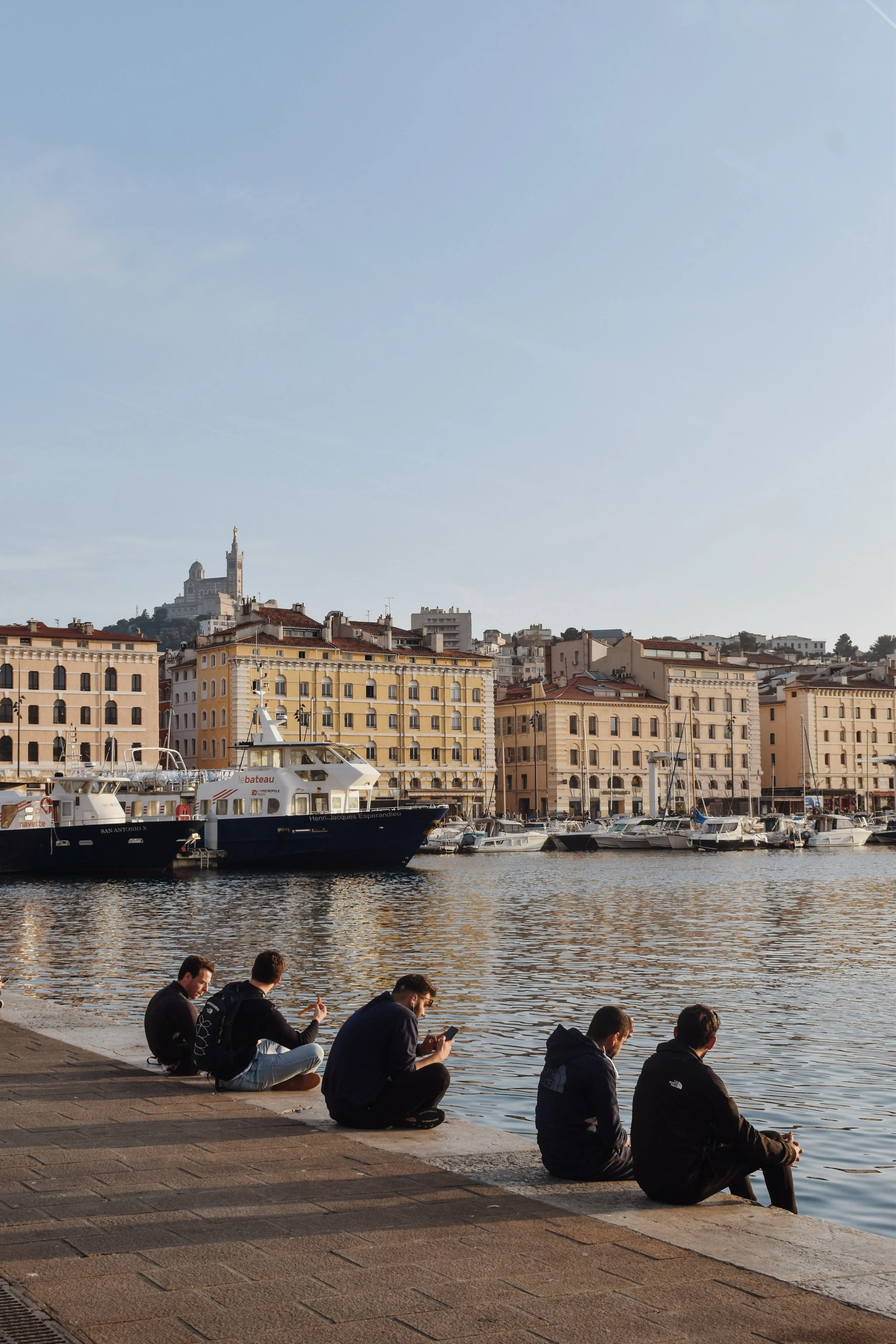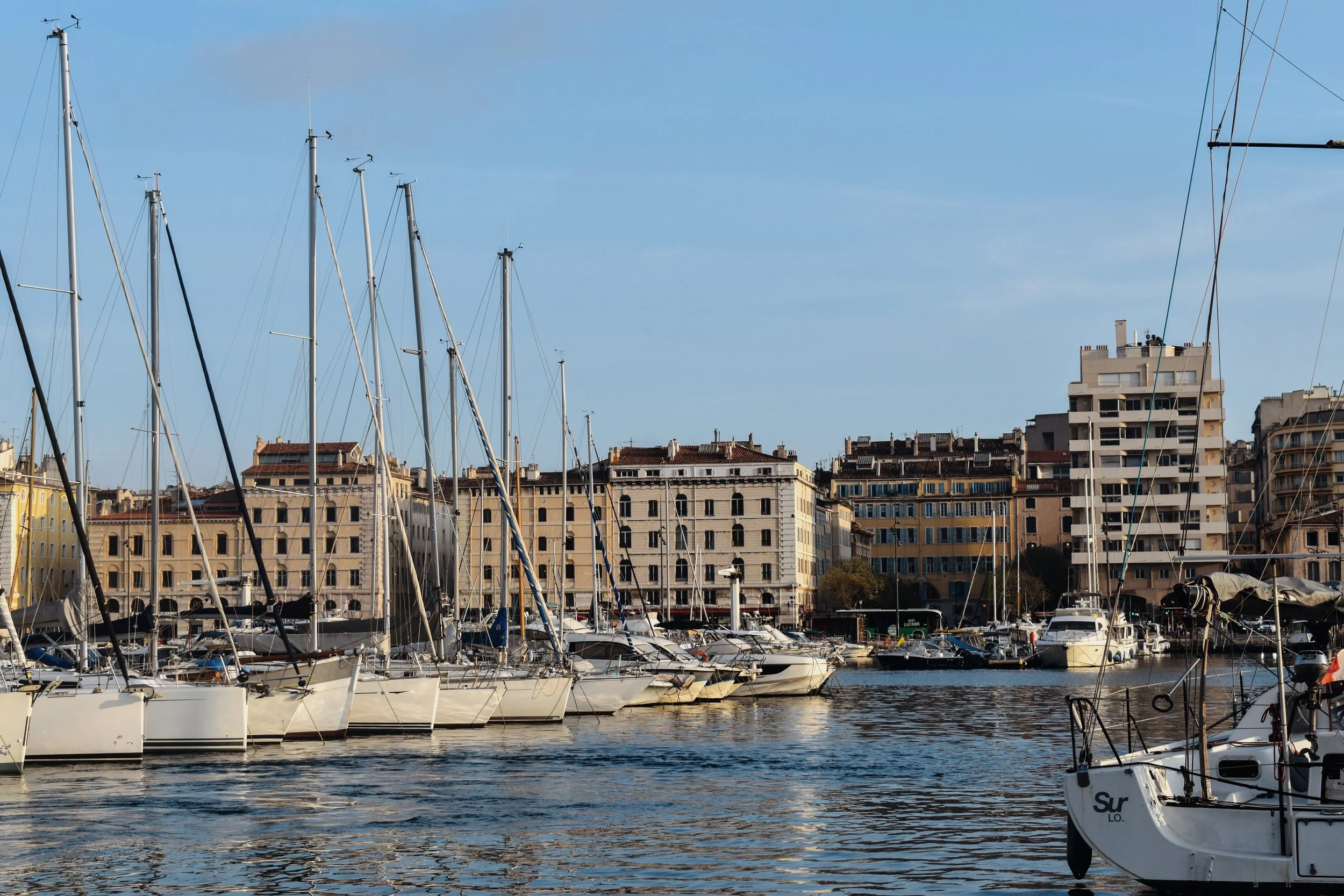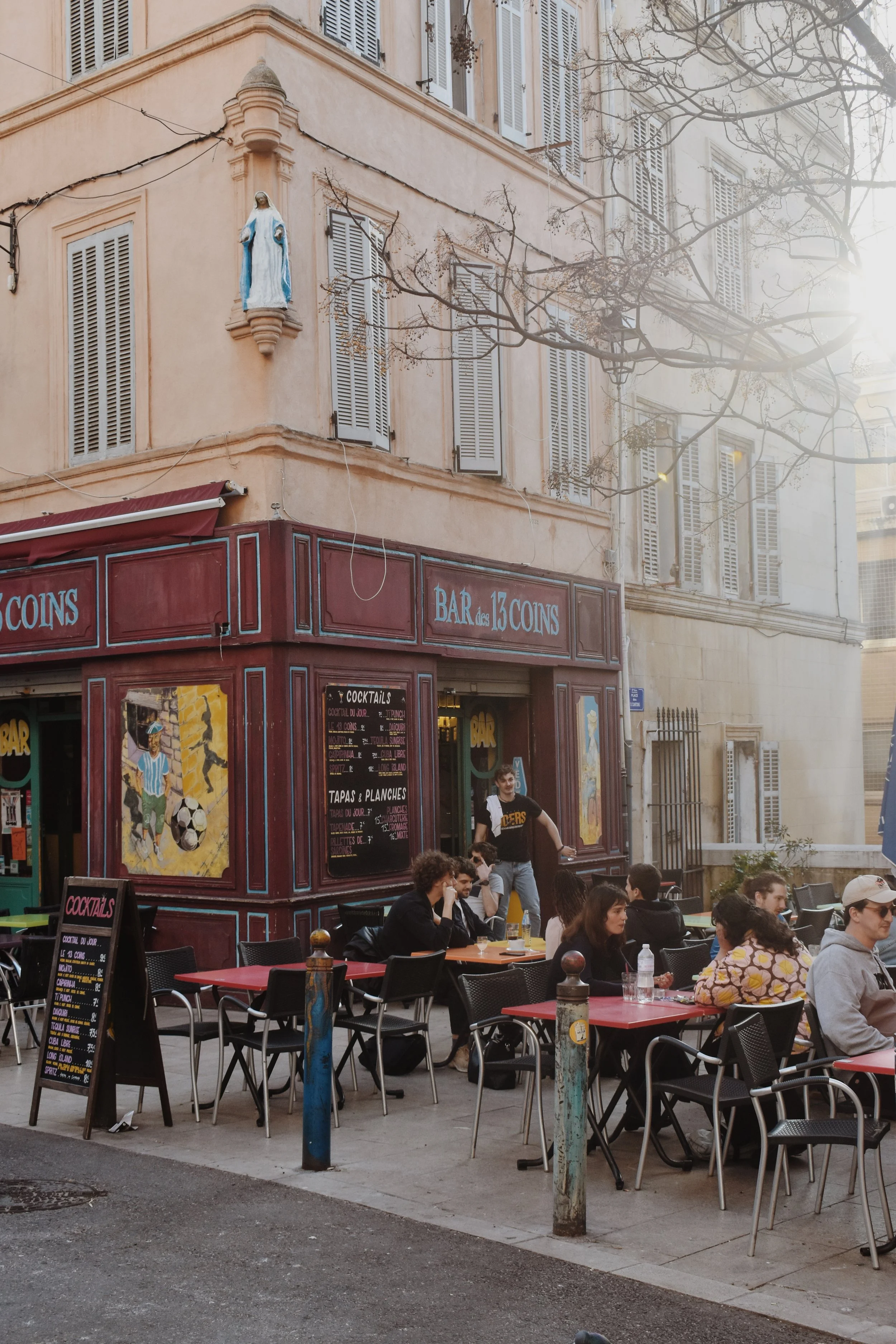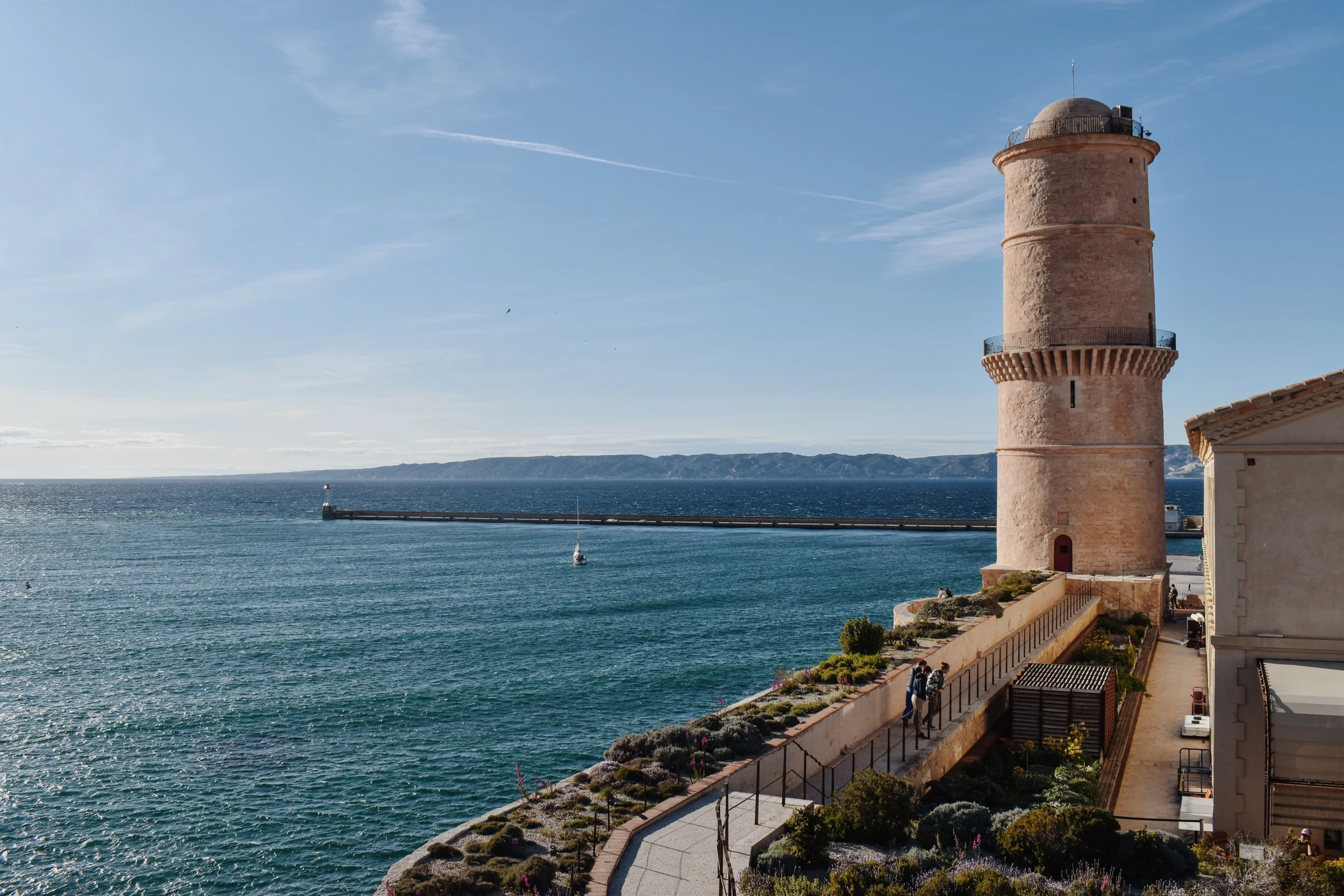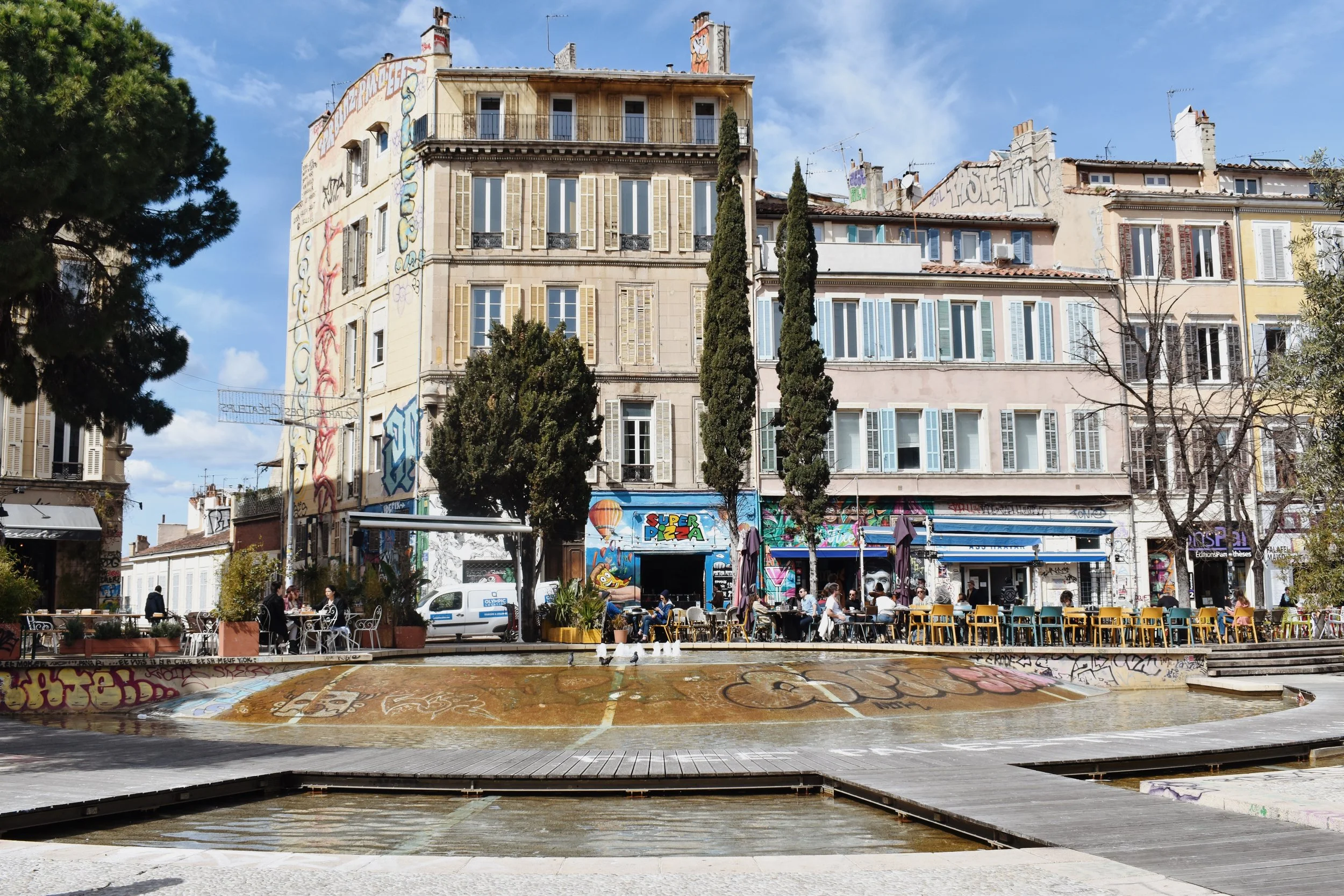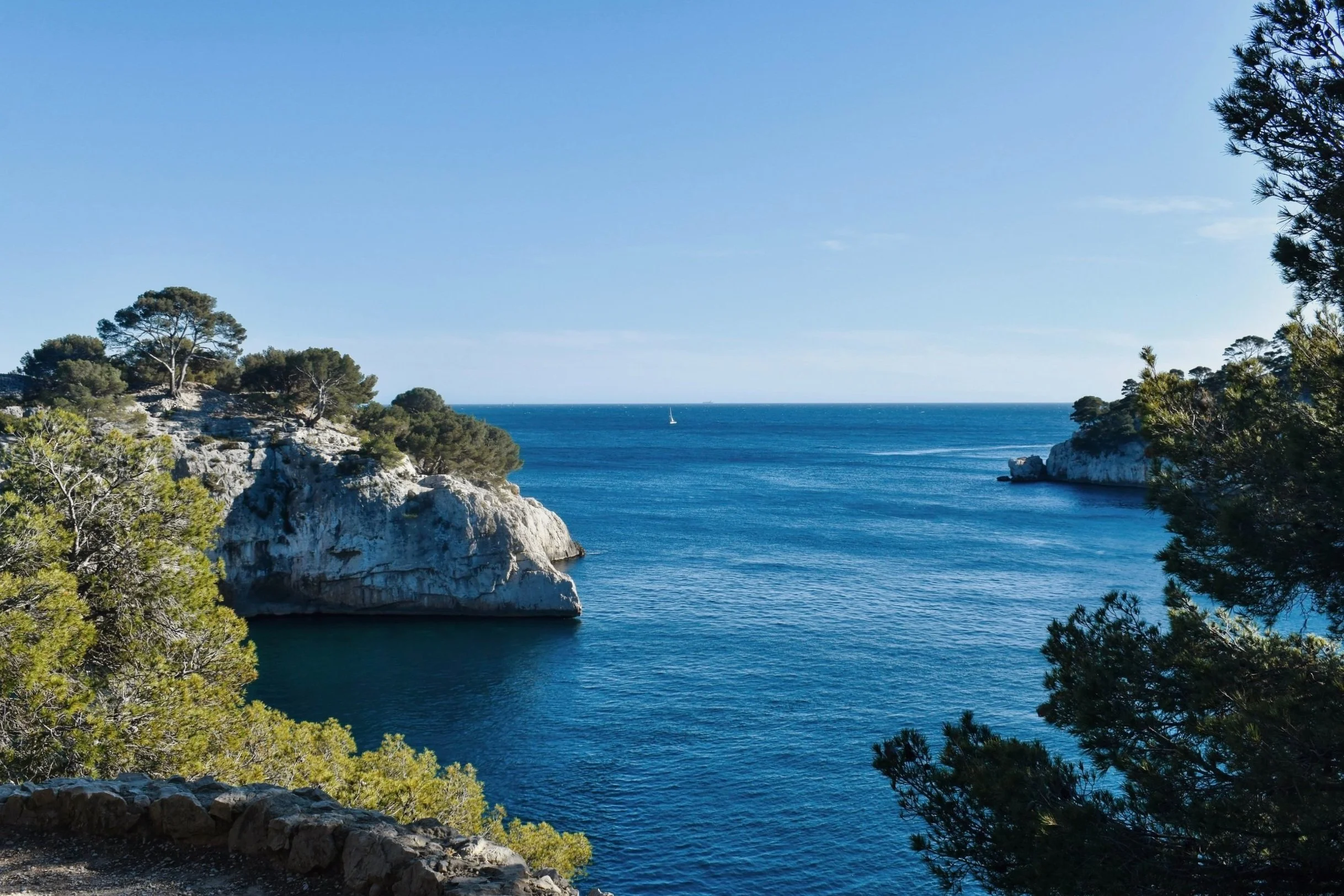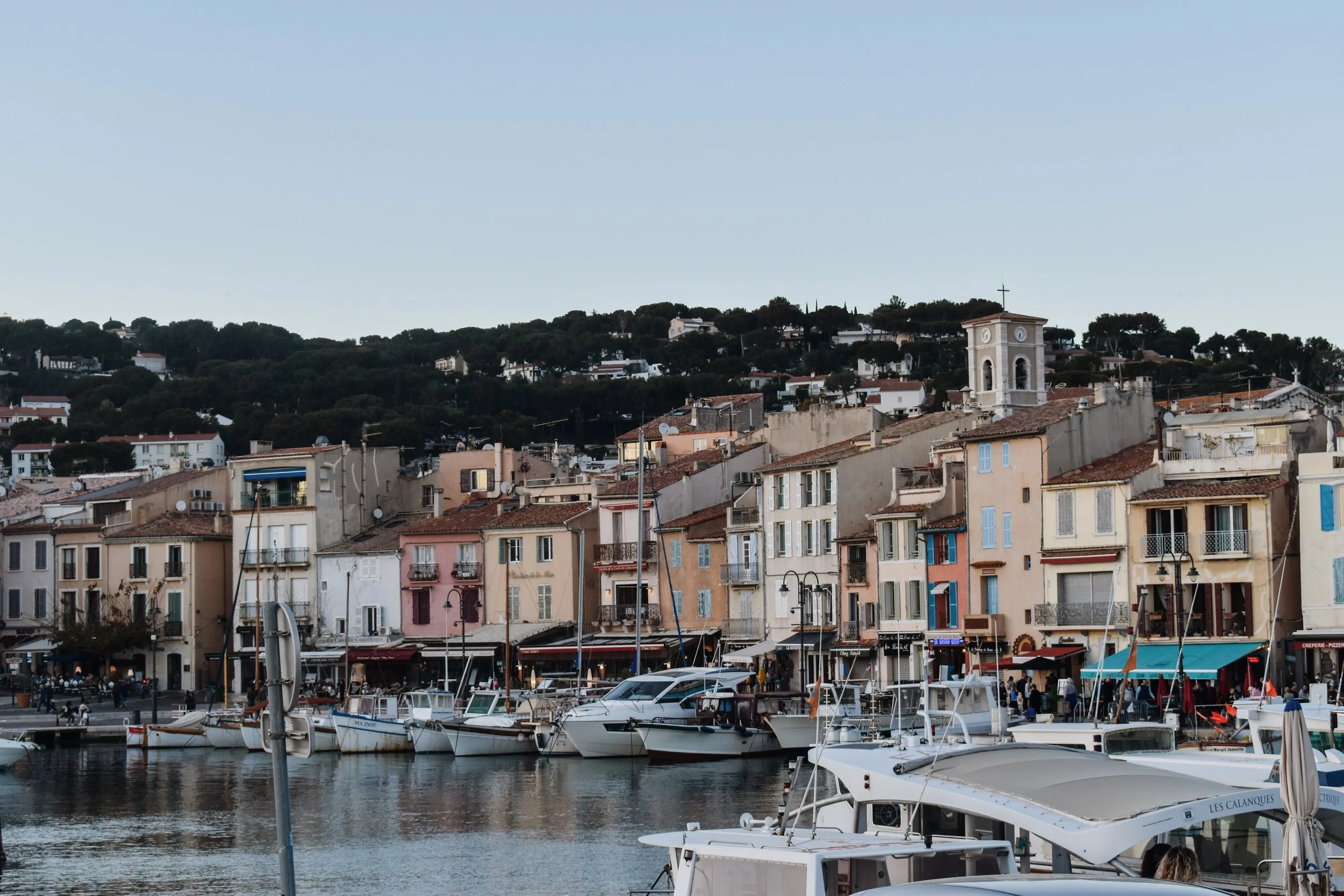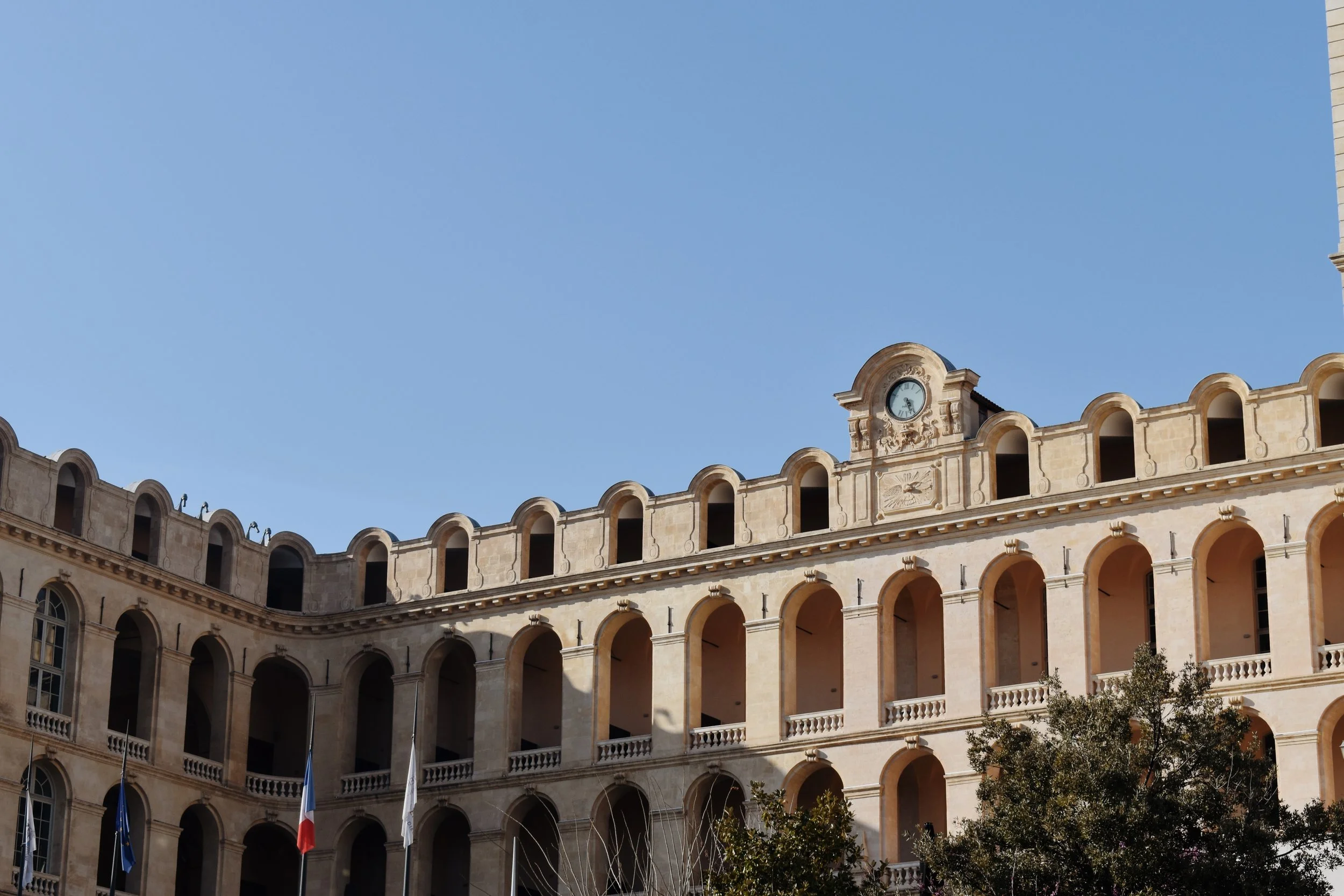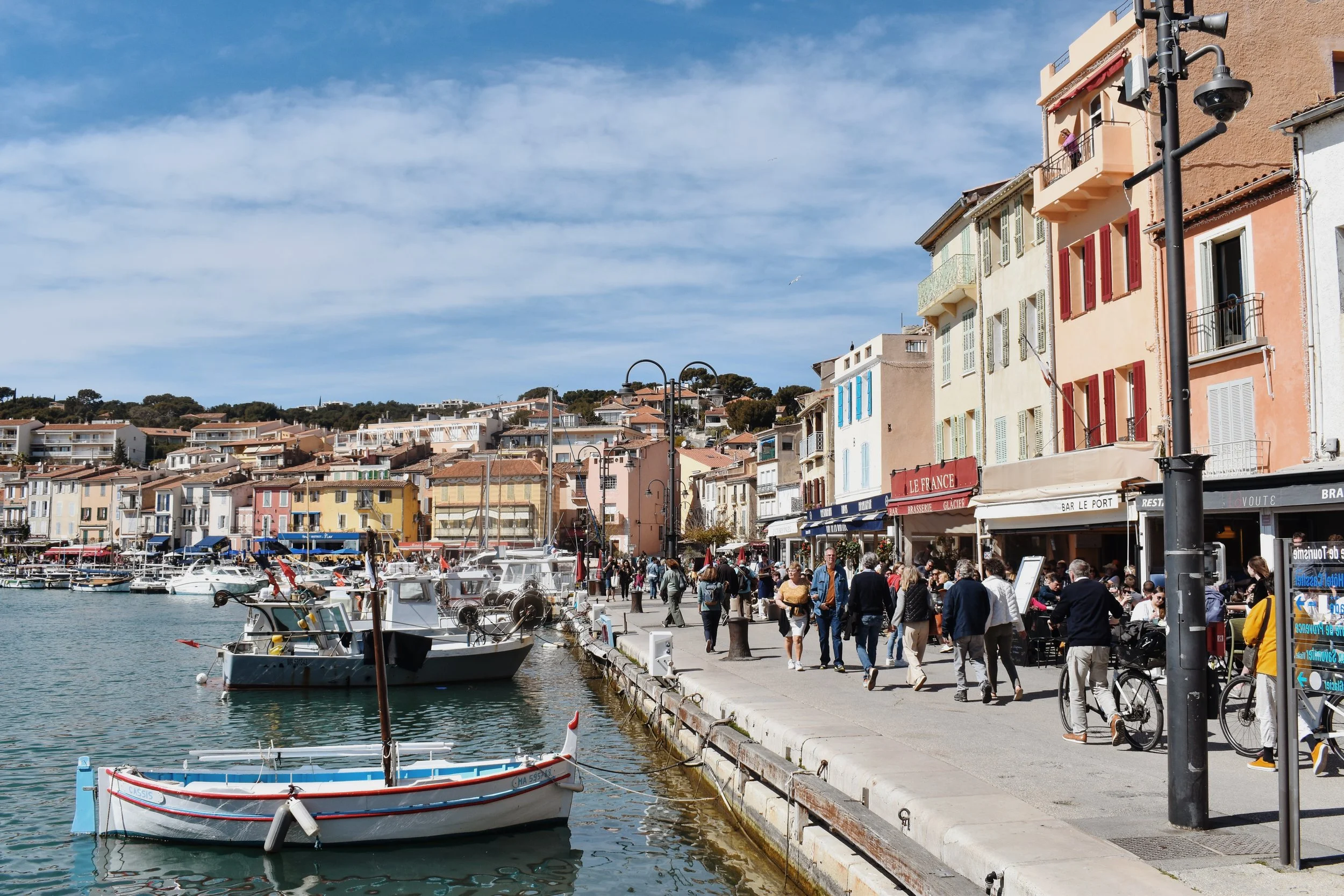Visiting Marseille: What to See & Do in the Port City along the Côte d'Azur
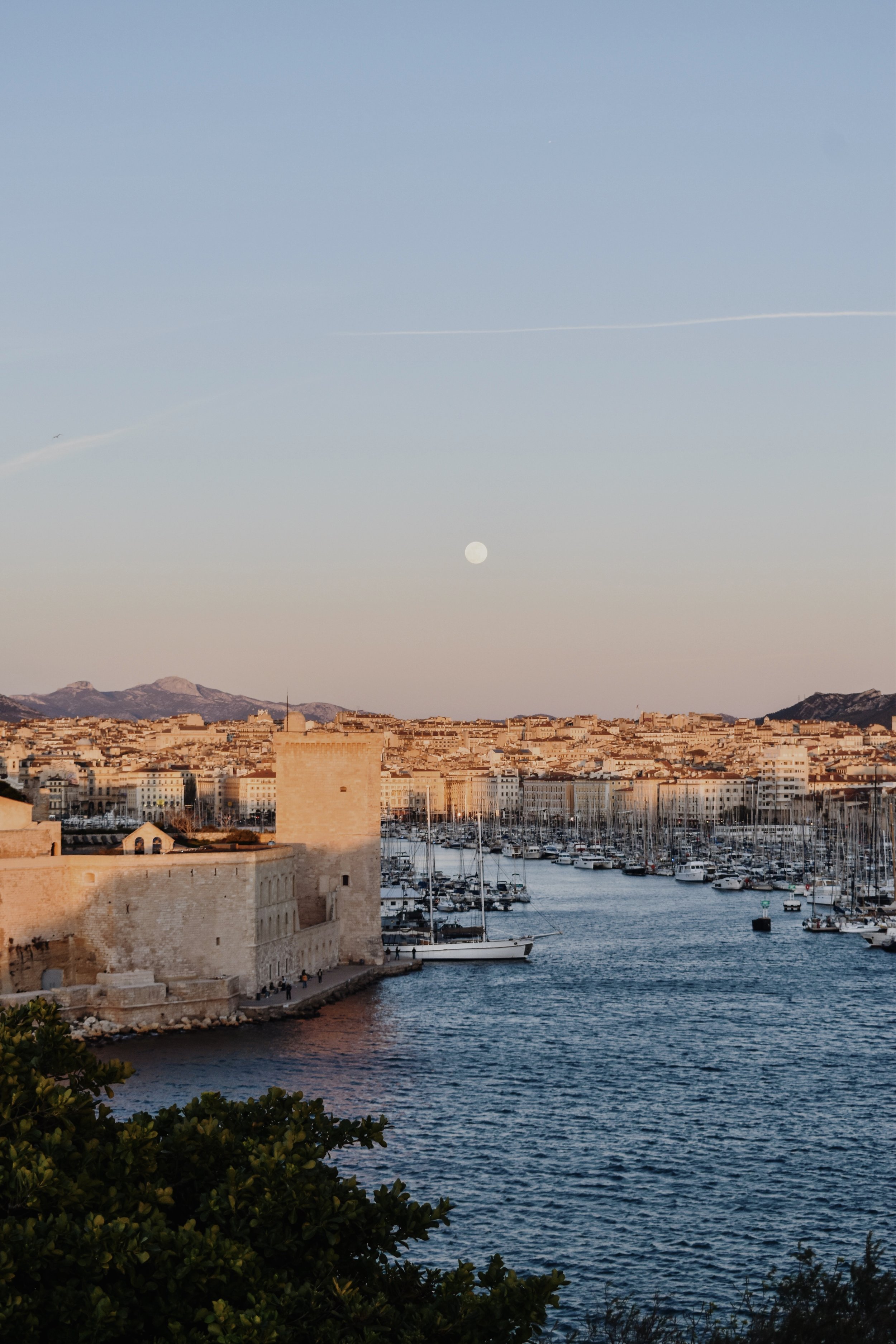
Marseille, the oldest city in France—now currently the second largest city in the country, has a storied past that saw many cultures passing through (and staying). This melting pot of influences can still be felt in this port city, which enjoys over 300 days of sunshine, in the south of France.
As the capital of the Provence-Alpes-Côte d'Azur region, Marseille is a big city with diverse offerings. The smell of fresh catch brought in by fishermen along the Old Port every morning, state-of-the-art museums that some have likened to the ‘Bilbao effect’, some of the most impressive displays of street art you’ll see, as well as treks to the beach for a slice of summer, you’ll find all this and more in Marseille.
Many will skip over the city as a gateway to the more postcard perfect places in Provence and further east to the French Riviera, but you can easily have a fantastic weekend break here if you do it right.
What to Do in Marseille
Get Lost in Le Panier
This was my favourite area of Marseille by far.
This is the oldest district in the city, and where Marseille started, when it was founded in 600 BC by the Greeks.
This working class neighbourhood (much like Marseille itself), had quite the reputation in the past, but a big clean up in the early 21st century brought about a completely new lease of life, characterised by charming hole-in-the-wall restaurants and bars, art galleries, local boutiques and more.
Simply wander around the colourful streets and alleyways, with a façade that has definitely seen a lot, but in a way that feels storied and lived in.
WHERE | Le Panier, to right of the Old Port
Discover MUCEM, the Museum that Invigorated Marseille
Short for Museum of European and Mediterranean Civilizations, MUCEM is an absolute Marseille must-see.
The MUCEM is notably one of the first major national museums dedicated to the civilisations of the Mediterranean for the 21st century. Opened in 2013, this year was a historic one for the city as Marseille was awarded the European Capital of Culture.
It is a sprawling structure that technically encompasses three buildings. Dedicate at least 2 hours for the inside of the museum, because when you’re done, there’s still more to discover outside.
The heart of the museum is the architecturally stunning J4 Esplanade, a truly stunning display of architecture, which is a reflection of modernism.
Then, you cross the footbridge over the sea to the Saint Jean Fort, which dates all the way back to the 12th century. Happily, even if you’re not the museum type, you can visit the Fort for free, and I’d say it’s well worth checking out. From here, you’ll get truly stunning panoramic views, not just of the city but of the waters down below, which absolutely glisten in the evening sunshine.
It’s an incredible representation of the old and new in Marseille, the juxtaposition of which has always been an object of fascination—seeing how different cities and countries develop and have the two co-exist.
WHERE | 1 Esp. J4, 13002
Visit the Historic Fish Market (Old Port)
As a visitor, it’s likely you’ll spend many times crisscrossing the Old Port, which is the beating heart of tourism in the city.
Get an early start to the day to check out the historic fish market that takes place daily.
For the most part of the 1900s, the fish market used to be located along Quai de Rive Neuve, which runs on the other side of the old port, but was moved when the La Criée Theatre was built. While it may have the hallmarks of a tourist trap, there were many marketgoers here in the morning actually looking to get some fresh produce. I was lucky enough to catch the Flower Market (which supposedly takes place on Tuesdays and Saturdays), on the Saturday underneath the Canebière—another architectural gem acting as a ceiling mirror, which meant that morning was particularly lively with an incredible atmosphere.
If you’re looking to get a ferry (to the calanques, Castle of If and more), it’s likely you’ll depart from the Old Port too, but more on that later.
Somewhat obvious, but I’d also stray away from dining at the many restaurants that line the Old Port directly, as many cater almost exclusively to travellers and are quite expensive, with many not looking that quality either.
WHERE | Quai des Belges, Vieux-Port
Hike Up to the City’s Cathedral
From where you stand in Marseille, it’s highly likely you’ll spot the Basilica of Notre-Dame de la Garde perched on the hilltop, overlooking the port and city’s inhabitants.
If you fancy a bit of a hike, you can do the walk up the hills to the Basilica as it’s about 45 minutes from the Old Port. However, it’s worth mentioning for mobility reasons that you can also take bus 60, which takes you directly to the foot of the Basilica.
Built in a Roman-Byzantine style, the outside of the cathedral is, in my opinion, the real attraction. Especially as you can go all around it and take in a 360 degree view of the city skyline.
It’s not hard to see why it’s the most visited site in all of Marseille.
WHERE | Rue Fort du Sanctuaire, 13006
Take in the City’s Street Art District of Cours Julien
Between the late 1800s to 1900s, Cours Julien used to be the central marketplace for fruits and vegetables, but a plan to free up space in the city by the City of Marseille took these wholesale market activities to the north in Les Arnavaux.
With a distinctly bohemian vibe, Cours Julien is characterised by street art on every corner. Don’t miss the staircase marking the entrance to the neighbourhood— Escaliers du Cours Julien, pick up soap from Marseille (a local specialty if you haven’t heard!) at Savonnerie Marseillaise de la Licorne, and grab brunch at Black Bird Coffee, some of the most popular spots in Cours Julien.
WHERE | Cours Julien, by metro stop Notre-Dame du Mont
Watch the Sunset Over the Old Port
This was by far one of my favourite experiences in Marseille.
A good sunset, in my book, is one that can end any day perfectly.
And my favourite sunset was from Parc Émile Duclaux, across from Fort Saint Jean.
I picked this spot as Fort Saint Jean closes 15 minutes before the MUCEM closes, which happened to be quite a bit before sundown when I visited, so I hopped on a bus to take me across the other side to this park, which closes at 9pm, to watch the sunset instead. And that spur of the moment decision could not have been better—the view you get from here is absolutely stunning. It’s unblocked, and you can one of the prettiest views of the Old Port from afar, which you can’t get anywhere in the city, much less when you’re actually at the Old Port itself.
WHERE | 86 Bd Charles Livon, 13007
Visit an Iconic Architectural Masterpiece
Ever heard of Le Corbusier, aka Charles-Edouard Jeanneret?
This Swiss architect designed five Unité d’Habitation, a new housing unit system that on the outside, looks like another housing complex, but on the inside, is home to two shopping streets, a rooftop terrace, a bar and restaurant, and a hotel!
This envisioned new way of urban living is described as a vertical garden, and is home to over 400 flats.
As you can imagine, only select parts of the building are open to visitors, so you can’t just wander around a corridor, so you sign in at the concierge to enter the 3rd, 4th and 9th floors, where you’ll find the aforementioned shops, restaurant, hotel and rooftop terrace.
From here, you’ll also get a panoramic view of Marseille, but markedly different from the view at the Basilica given it’s location further south.
While it was interesting to see, admittedly if you come from a city or country with many high, sprawling apartment blocks that have become mixed-use spaces, this concept won’t be unfamiliar, much less impressive. However, if you’re a fan of visiting architecturally important sites and have a bit more time to spare, this oft-overlooked bit of Marseille feels a lot more local than most tourist attractions.
WHERE | 280 Bd Michelet, 13008
Sail to a Fortress Island
Chateau d’If was constructed to protect Marseille, and is located a 20 minute boat ride away from Marseille.
It is also one of Europe’s oldest prisons, and you can opt to just visit the island of If, or combine it with a visit to Friou island, which is a natural area where people go to enjoy walks and their small beaches. If anything, they’re a lovely getaway from the hustle and bustle of Marseille city.
However, during my weekend trip, this was not a trip I actually managed to do, as the weather conditions were not permitting boat trips anywhere.
As mentioned, ferries leave from the Old Port, and while there are many providers which can seem confusing for a first-time traveller, the staff at my accommodation mentioned to take the ferry from Le Bateau Frioul-If. You can buy rock up to the ticketing counter at the Port to get tickets on the day of, but it’s well worth checking their main website to ensure a boat trip is even possible.
This is due to the weather phenomenon known as the mistral, a cold, dry and very strong wind, typical of this region. It can even reach hurricane levels of strength so this wind is truly not to be underestimated as it can put a wench in your travel plans if you plan to do lots of ferry trips and sailing.
WHERE | 1 Quai de la Fraternité, 13001 (Le Bateau Frioul-If counter)
Hike the Calanques
You simply cannot come to this part of the south of France and miss out on the calanques.
Hidden beaches in coves, little fjords with yachts docked in sparkling turquoise waters, a Calanque is a stunning geological formation made of limestone. These rocky coves form a steep and narrow valley inland and are characteristic of the Mediterranean sea.
Marseille is right next to the Calanque National Park, and there are several ways of visiting the park to get the most out of your experience.
One option, is to take a boat trip, right from the Old Port in Marseille. However, be advised that boats will not dock to let you swim to the coves, so you’ll only see them from the waters.
The other, is to go to the park to start hiking yourself.
There was a whole myriad of ways I found online but this was the best (and easiest) route to do without a car.
Simply hop on a regional train from Marseille St Charles train station to Cassis, a seaside town right next to the National Park. From there, you’ll have to either walk about 40 minutes through the rolling countryside from the Cassis train station, or take a shuttle bus that will take you to the Casino of Cassis, but bear in mind that it can be a long wait till you can get on the next bus, so either time your train ride from Marseille properly or do the walk into town, which is quite pleasant and flat, and enjoyable with nice weather.
From the bustling seafront, you’ll take another 30 minute walk up into the hills to begin the very popular hike that takes you to Calanque de Port-Miou, Port Pin and d’en Vau.
The hike is well-demarcated, not to mention the popularity of this hike means there’ll be lots of hikers also on this trail. But bear in mind that Calanque d’en Vau is physically demanding to get down to the beach, more so than to Port Pin, so gauge how much you want to get out of the hike and if you plan to stay to enjoy the beach.
WHERE | Best accessed from Cassis, a neighbouring seaside town
General Tips
Is Marseille Safe to Visit?
I tend not to enjoy writing about these type of things, as it often falls into tourist scaremongering territory. Not to mention I personally do think a lot of this is racially charged, given Marseille’s very large immigrant community, which is an attitude I’d very much like to go against.
But given its history, and the general sentiment towards Marseille, I think it’s worth speaking about my honest experience of safety in the city.
I did this trip as a solo traveller, and I largely felt fine, especially in the touristy areas near the Old Port, at the Basilica etc. However, given the safety concerns I felt like I was made to be aware of by other travel guides, public forums and peers, I felt constantly hyper aware of my surroundings, which also wasn’t the most relaxing experience. When the truth is, nothing actually happened during my time there.
They say there are certain areas a tourist just shouldn’t step in, and truth be told, it’s unlikely that you’ll just stumble on a really rough district you shouldn’t be at, nor would you as a tourist have any business in these suburbs. Are some streets in the centre rough and ready? Sure, it’s not shiny and pristine. Will you see some areas filled with trash, and see people in less well-off circumstances on the street? Sure, but you’ll find that in a lot of other major cities around the world too.
Ultimately, if you stick to the well-trodden areas, and I went as far south as Sainte-Anne and into the start of the 4th arrondisement, making use of the bus, subway, and walking on my own, and it was largely fine.
So I wouldn’t put safety as a reason to actively avoid giving Marseille a chance, just have your wits about you as you would about any big city.
How to Get to Marseille from the Airport
If you’re landing in Marseille’s airport, you can hop on a bus that comes every 10 minutes to take you to Gare St Charles, from where you’ll have to find your way to your accommodation. The trip takes 30 minutes and you can already purchase a round trip ticket from the counter at the airport’s bus stop.
The airport in Marseille also takes you to places like Aix-en-Provence directly if you’re not going to Marseille city.
How to Get Around Marseille
Marseille has a decent public transport infrastructure, which is easy to figure out and use.
Simply tap on with your bank card, each ride costing €1.70.
You’ll likely be getting around on foot around areas like Le Panier and the Old Port, but many public transport connections run through the Old Port so you can get to most places quite easily with the bus and train there. I mostly made use of the bus during my stay, and worked as well as I needed it to.
Best Day Trips from Marseille
Chateau d’If / Frioul Island
As mentioned, it’s well worth checking out Chateau d’If and the Frioul Islands if weather permits, and make a day trip out of it by visiting the beach and going on walks.
Calanques National Park
Then definitely go to the Calanques National Park. To truly cover a big amount of ground, you’ll likely need your own set of wheels, otherwise the three calanques route I mentioned above is easy enough to do as a full day trip.
Cassis
If you’re after a more seaside town holiday, it’s worth looking into staying in Cassis itself, which is very pretty and also popular with travellers.
Aix-en-Provence
Aix-en-Provence is a very pretty town inland, that feels more well-heeled than Marseille, and is also known for its many local markets and beautiful streets. Well worth having a walk through, as it feels like a completely different experience to Marseille.
French Riviera
Starting your French Riviera trip from Marseille is also an easy option, as a train ride less than 3 hours away will take you from Marseille to Nice, where you can move out from there to visit the many stunning places along the Côte d'Azur, like Monaco, Menton, Villefranche-sur-Mer, Ėze, Cannes, St Tropez and more.

